This is a tricky one, how does one choose just ten from all the glorious blooms of April? I have left out some favourites in order to include a few more unusual ones.
First of all, let’s hear it for the magnificent magnolia, an ancient tree which has been around for millions of years. There are more and more wonderful hybrids so nobody needs to grow the ubiquitous Magnolia soulangeana which you see in every suburban garden This variety takes years to bloom and is often ruined by frost just when it is looking its best. When I moved here there was not one single magnolia in the garden, so I chose varieties which I knew would bloom when they are young. Some of them bloom in late March or early April and and some a bit later. The first in flower is snowy white Magnolia stellata with strappy petals ; sorry tepals, magnolias don’t have petals. It is lightly fragrant which is a bonus. This was a gift from dear friends so it is extra precious.
Just as beautiful are the pink flowers of Magnolia stellata’s child Magnolia x loebneri ‘Leonard Messel’ . Like stellata this blooms at a young age, but it is fast growing, mine is only six years old. As you see it blooms prolifically. It is slightly fragrant and reasonably frost resistant.
Another magnolia which grows fast and blooms generously when still young is a New Zealand hybrid called ‘Star Wars’. This was recommended by the late Princess Sturdza, owner of the wonderful garden near Dieppe, Le Vasterival. She knew a good plant when she saw one. It has Magnolia campbellii as one of its parents and has inherited the enormous flowers. Magnolia campbelli takes years to flower and blooms early so the flowers are often destroyed by frost so it is not suitable for Suffolk or for an impatient gardener. ‘Star Wars’ is a glorious sight in full flower. Mine is only seven years old.
The other parent of ‘Star Wars’ is the dark pink Magnolia liliflora. I have a dark form called Magnolia lilifora ‘Nigra’. I layered the one in my previous garden and so I was able to bring this with me. It is about ten years old now. Magnolias are easy to propagate by layering, just pin down one of the lower branches and cover it with soil.
Even darker than Magnolia liliflora ‘Nigra‘ is a wonderful hybrid with globular flowers called ‘Black Tulip’. So far it only has a few flowers, but it’s still very young.
So those are my April magnolias, I have one or two more but they will have to wait for another time as they are only just coming into bloom.
And now for a rather unusual shrub. It is in fact a flowering currant called Ribes speciosum although everyone who sees it thinks it’s a fuchsia. It has glossy leaves and bright scarlet flowers which look like dangly ear rings. It enjoys the warmth of a south facing wall.
I love the spring -flowering sweet pea Lathyrus vernus. It is non-climbing and makes a neat little cushion of very pretty, vibrantly coloured flowers.
It also comes in two- tone, pink and white. This is called Lathyrus vernus ‘Alboroseus’. I don’t know which is prettier.
I used to grow quite a few different euphorbia but I am a little wary of them since my daughter had to have medical treatment after rubbing her eye after handling one. This was after she had washed her hands too, she couldn’t see properly for three days.The sap can actually burn the cornea and cause blindness so she had a lucky escape.The sap will blister the skin too specially if the sun gets on it. But, I do love it at this time of the year. Euphorbia amygdaaloides var. robbiae is quite invasive but it looks lovely running around with camassias and bluebells. (Spanish I’m afraid.).
The common name for this euphorbia is ‘Mrs. Robb’s Bonnet’. Apparently Mrs Mary Anne Robb found this euphorbia growing in Istanbul in 1891 and brought it back in her bonnet box. Ouch, I wouldn’t fancy getting the sap on my head!
I grow the large Euphorbia mellifera because it makes a real statement and I love its honey scent. It comes from Madeira so it can get knocked back in a severe winter but it came through this last one with no ill effects.
Despite saying I wouldn’t buy any more I rather fell for Euphorbia characias ‘Black Pearl’ for its neat heads and black frogspawn eyes and I had to have it.
And at this time of the year I wouldn’t be without Euphorbia polychroma, it has such a nice neat habit and bright buttercup yellow flowers.
I feel a bit guilty recommending euphorbia when it has such dangerous sap so please handle it with care.
Spring is the time for woodland beauties, each one more beautiful than the other. I love the way Sanguinaria canadensis f. multiplex ‘Plena’ runs around and forms large pools of gleaming white round flowers. It has lovely bluish scalloped leaves. This plant too has toxic sap which is bright red giving it the common name of ‘Bloodroot’. It can cause nerve damage if ingested. What poisonous places our gardens are with such innocent looking flowers being potentially so dangerous. Later in summer this plant disappears so you have to remember not to dig it up by mistake.
I have a passion for fritillaries. We are lucky here in Suffolk as we have one of the few remaining meadows of native snakeshead fritillaries and it is looked after by the Suffolk Wildlife Trust so it is safe. In the garden they are easy to grow and seed around happily as long as the pheasant doesn’t peck all the heads off as he sometimes does when he gets bored. The usual snakes head fritillary has a checkerboard pattern in purple or you can get pure white. I rather like this cross between the two which is pink on a white background.
Crown Imperials spread well and are a dramatic sight either in red, yellow or orange. They do smell of fox though.
I am particularly fond of Fritillaria michailovskyi even though I can never remember how to spell it. Any bell-shaped flower appeals to me and this one is maroon edged with yellow. It lives in a pot so that I can attend to its needs. It comes from Turkey and needs a sunny position but it mustn’t dry out.
My favourite fritillary is Fritillaria verticillata. It makes an ever increasing clump with tall stems and long tendrils .The flowers are cream with brown spots.
Epimediums are looking their best right now if you remembered to cut off the old leaves. Cathy at WordsandHerbs lives in Bavaria and she tells us they are called Elf flowers in German and what a good name for them. They are elf -like and so dainty.
Another gorgeous woodlander is the exotic- looking erythronium. They seed around happily so you soon get big clumps. The cheapest and most readily available is Erythronium ‘Pagoda’.
I love Arum creticum which has glossy leaves and bright yellow spathes. It seems to enjoy a sunny position. It doesn’t have the disgusting smell of other aroids such as Arum dracunculus which smells of rotting flesh. In fact it is pleasantly fragrant. This arum is not invasive but seeds around modestly and each plant is welcome.
I am going to finish with something rather unusual. It is the beautiful alpine Soldanella alpina. I first saw it a few years ago growing in Switzerland near Zermatt and my heart was beguiled.
It has heart shaped leaves and fringed bell-shaped flowers like little pixie caps.
I can’t take credit for bringing my newly acquired plant into flower because this is how I bought it. I saw it and had to have it in spite of being told how difficult it is. Of course what it wants is moisture and the top of a mountain. Reginald Farrer says it is difficult to coax it back into flower because the flowers form in winter and so are vulnerable to winter wet or slugs. Maybe I should dig it up and keep it in a pot.
Even if it never blooms again it is giving me enormous pleasure right now and anyway we gardeners like a challenge. I never believe I can’t grow something until I have killed it three times.
Well there are my ten and I haven’t even mentioned tulips or trilliums or any of the other glorious blooms making my garden sing at the moment. Here are a few more.
If you have the heart to pick out a few favourites this month please share them with us.


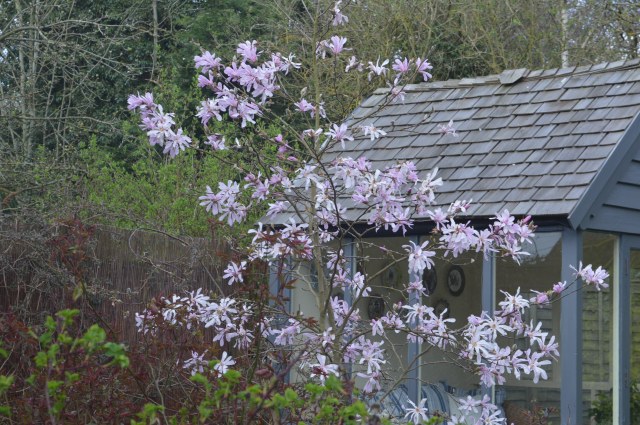

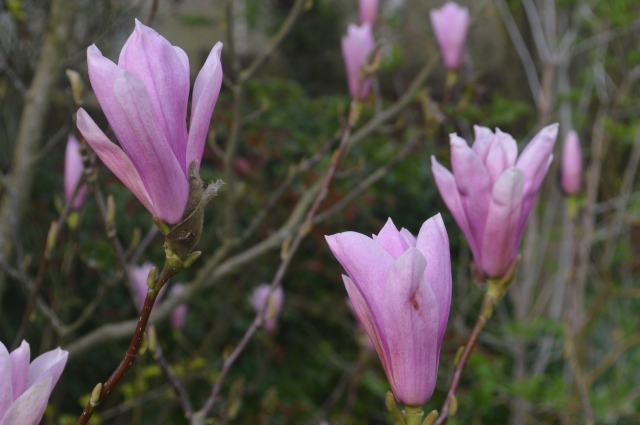
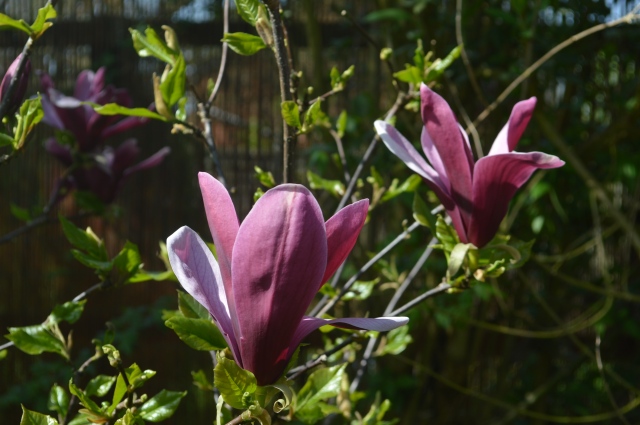
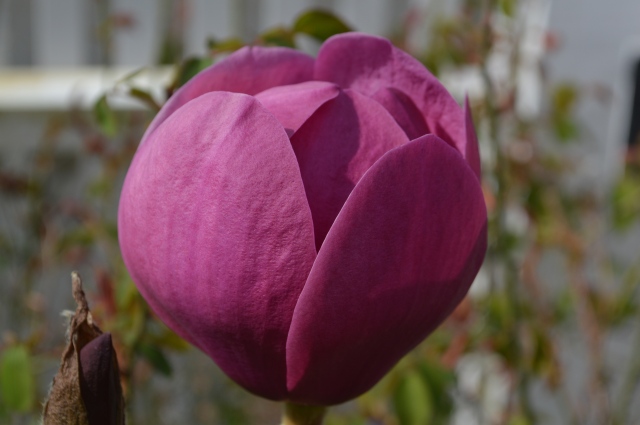


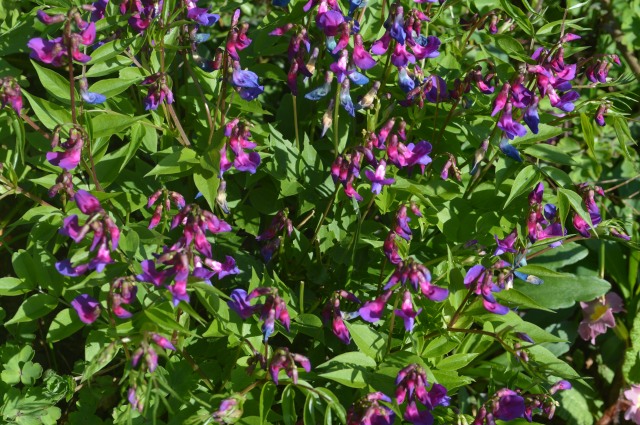
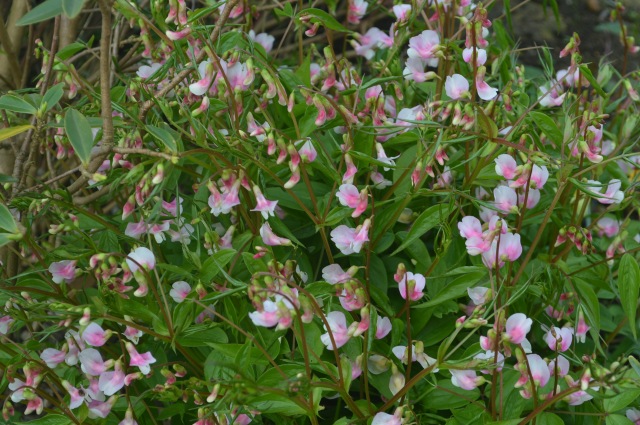

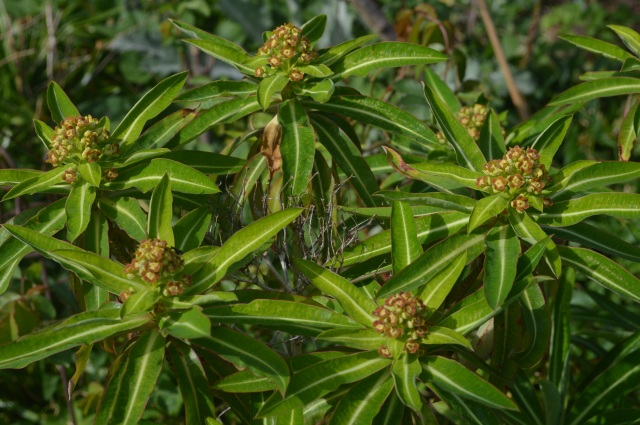
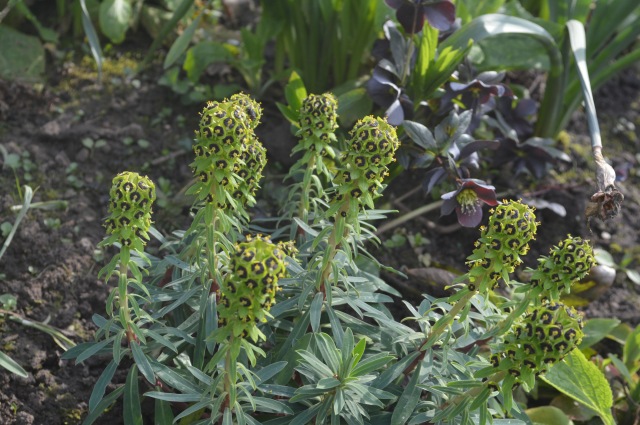
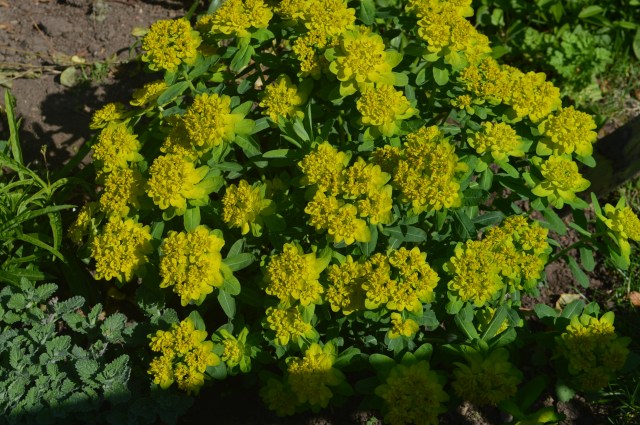

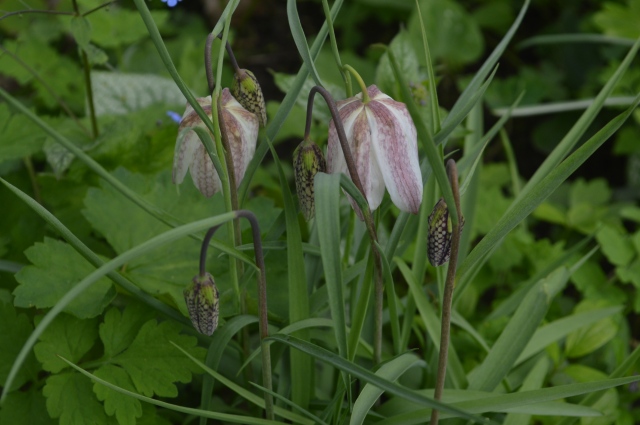

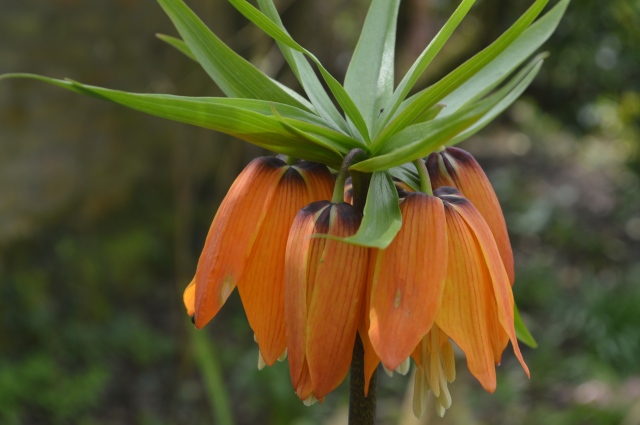
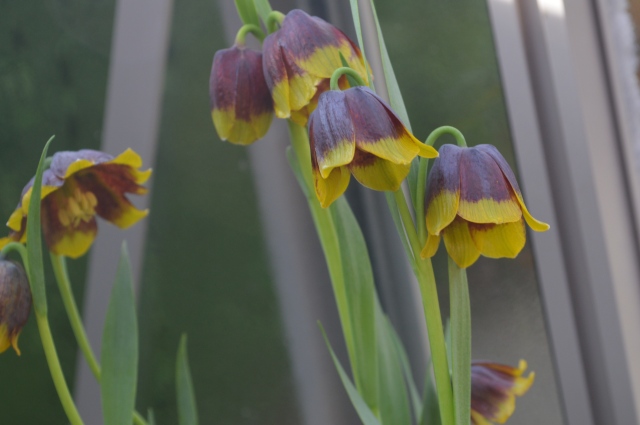
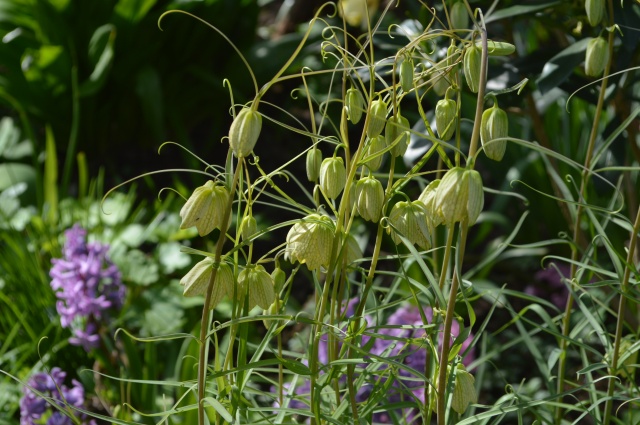
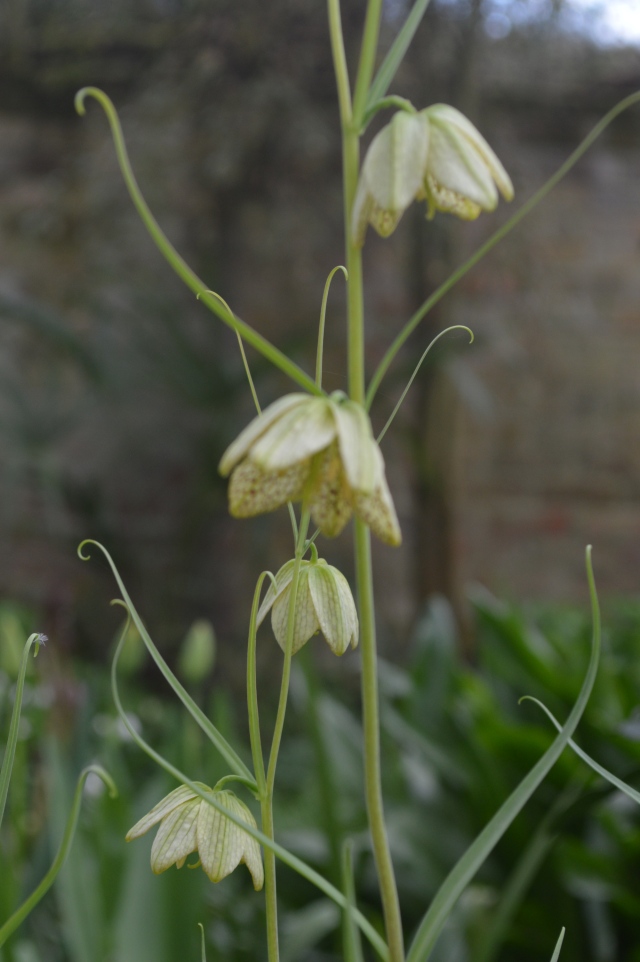




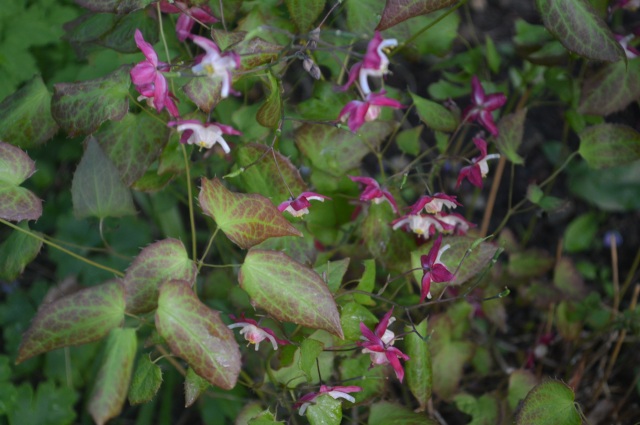
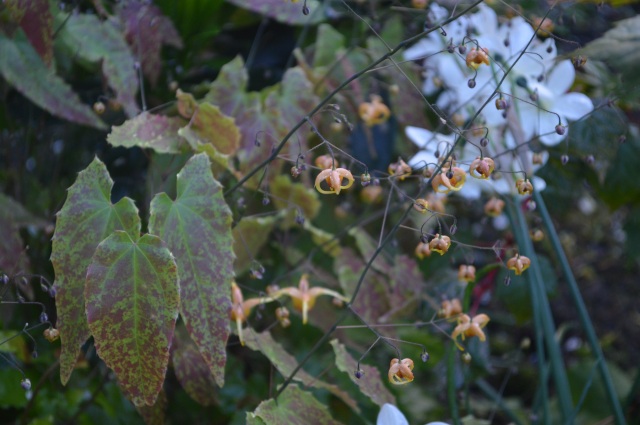
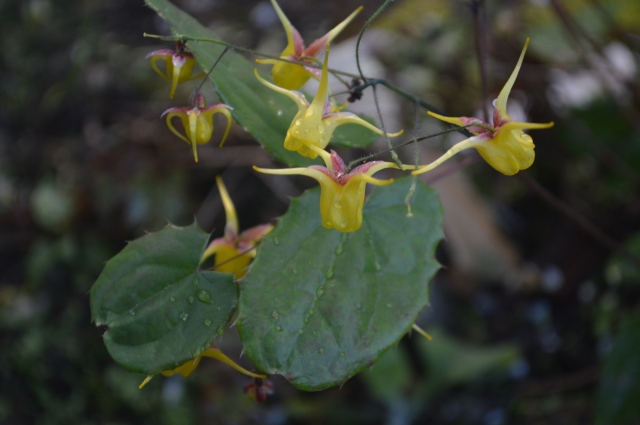



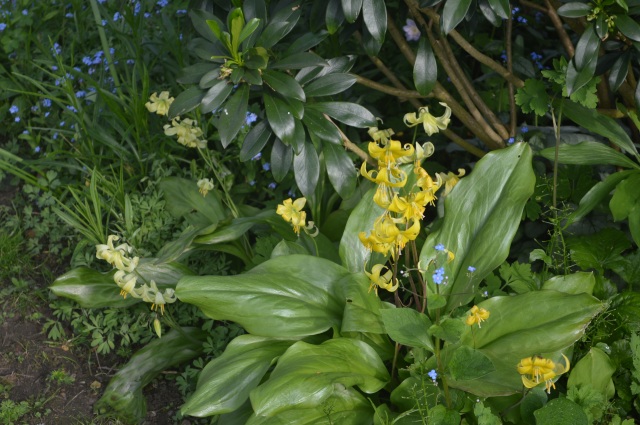




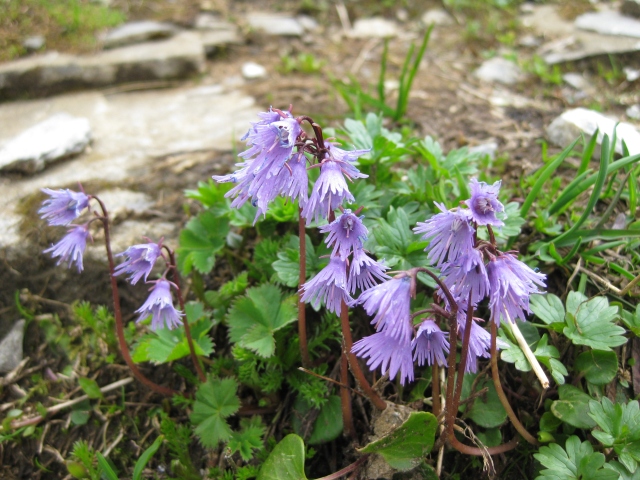
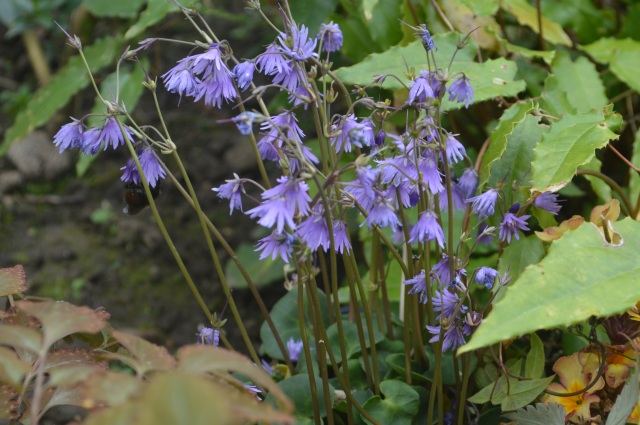













I love that you have such a wide variety of flowers in your yard!! Have you ever tried a Chinese Lantern Flower? I would love to do one, but am too late to start one.
What about sweet peas? I have got some of those growing, and am super excited!!!
-The Northern Garden
Do you mean Physalis alkekengi? It is easy from seed so it’s not too late, once you have it, it spreads quickly.
Yes, I grow sweet peas but they will bloom in the summer.
Yes, Physalis alkekeng.
Thanks for the advice! I will be on the look out for the seeds.
-The Northern Garden
Dear Ms Wells (Chloris),
We are putting together a garden tour around East Anglia for a fellow garden writer from the US – Marian St Clair. Due to a small misunderstanding (we thought she was getting in touch with you, she thought we were), we have left it rather late to see if it might be possible for our group (around 20 people) to visit your garden at Crown House on June 2nd (next month!). They are staying nearby at the Swan in Lavenham, and would obviously be prepared to compensate you handsomely for your time and trouble! Thanks and best regards,
Michael,
President, Discover Europe Ltd
(This may be a repeat, but the first time I thought I was replying to your most recent post – then I saw that I wasn’t, so I hope I have now!)
Glorious! When is that magic carpet arriving to whisk me to Suffolk.? So many wonderful flowers I had forgotten about. Magnolia stellata,Frittalerias and Bloodroot (native in my former garden.) Good luck with your Alpine experiment,I can’t blame you for loving that blue flower.
Thank you Amy. I read somewhere that the poet, Philip Larkin said he would love to go to China if he could go for a day. I feel like that about so many places, but specially about popping over to see friends’ gardens overseas.
Yes, a lot of the spring woodlanders that we treasure are native American flowers. I would love to see them growing wild.
The Bloodroot in my garden looked more like a white Osteospermum
What a gorgeous collection of blooms! Some of them are new to me, so it’s fun to learn about them. Many of them wouldn’t be happy in my garden and I can see they’re enjoying a much gentler climate in yours. I love the fritillaries, but haven’t had any luck with the few I’ve planted. Going by your ‘killing three times’ benchmark, I should try again!
Thank you Jane. And you have so many blooms unfamiliar to us here in the UK. That is the joy of blogging. Don’t give up on the fritillaries.
You have a marvelous collection of magnolias and epimediums, Chloris. Your garden must a delight to see!
Thank you Eliza, we are all enjoying lovely gardens here now that spring has arrived in all its glory. It is my favourite time of the year.
Your garden is a delight. Love all the magnolias and epimediums.
Thank you, the garden is certainly delighting me. Magnolias are a great favourite of mine. My previous garden had been a nursey once and there were 23 different magnolias, all fabulous.
Oh, my. That must have been a sight to see. Such a shame the flowers don’t last very long.
I don’t know which Lathyrus is prettier, either. Both are lovely. Oh my goodness–you have so many favorites and unique plants and bloomers to choose from! I have Euphorbia polychroma, Sanguinaria canadensis (the single-flower, straight species), and several of the Epimediums you profiled. All around the neighborhood here, the Magnolia stellatas are just about to bloom! Thanks for sharing photos and words about these special plants.
Lathyrus vernus is a little gem, I don’t know why more people don’t grow it. Your spring is a little behind ours then as our stellatas are going over now. But we had a week of glorious warm sunshine which sped everything along fast.
Your Spring may have been delayed but it’s glorious nonetheless! If I could think of a spot to put it, I’d try another Magnolia here. I inherited a large Magnolia grandiflora with the garden. It’s the only one commonly seen here but I noticed that a neighbor is successfully growing one of the smaller pink-flowered Magnolias (I don’t know which) and I’ve been coveting it ever since. The only plant we share at this point is Euphorbia ‘Black Pearl’. I love it but it has shown itself to be an aggressive self-seeder here, so much so that I may eventually pull it (and I have a LOT of it). Time permitting, I’ll put a top 10 list together before the week’s out and link back here.
Happy Spring!
If you are going for a pink one, I’d go for ‘Leonard Messel’ every time. No other magnolia produces so many flowers when it is still so young. Yes, all forms of Euphorbia characias are aggressive self seeders, perhaps I made a mistake, but it is so appealing.
I haven’t heard of ‘Leonard Messel’ but I’ll keep my eye out for it. Here’s my top ten list: https://krispgarden.blogspot.com/2018/04/the-domino-effect.html
I am drooling, this must be your best yet and the others have been pretty spectacular. That soldanella is straight on the list!
Thank you Gill. The label on the soldanella says ‘difficult’ and the nurseryman told me it will produce plenty of leaves but the flowers are a problem. It probably needs a scree, the greenhouse is too dry and hot. Still, I like a challenge.
Your magnolias are stunning. I have lusted over ‘Nigra’ and ‘Black Tulip’ for a while. That is a good warning about euphorbia. I have lots in my garden, and it is easy to forget the risks. ‘Black Pearl’ however is still on my wishlist. I love Lathyrus vernus, but have never grown it.
Black Tulip is a gorgeous colour and such an unusual shape too, it is really striking. Remind me later and I will send you a Black Pearl seedling when it prodces some. Lathyrus vernus gets better and better each year.
It’s always a great pleasure to read your posts. Your garden is filled with treasures, many of which are new to me, or at least new varieties.
Thank you Mrs. D. I enjoy yours too. I think spring treasures are the most exciting.
I’ve been thinking of you lately. Just last year I planted a tiny one-gallon sized Magnolia ‘Elizabeth’ and thought it would be years before I saw any gorgeous gold blooms. Surprisingly the (less than a meter tall) tiny tree has two fat buds that will be opening soon. You’ve got so many fabulous April blooms; who could choose only ten? Soldanella alpina has done well for me in pots outside, has rebloomed for a few years. Happy glorious spring!
Oh that is great, I’m so glad your ‘Elizabeth’ is going to bloom. I only have 2 buds this year, I was hoping for more. I am delighted to hear that your soldanella blooms each year, so there is hope for mine. Do you cover it up in winter?
An excellent selection of top blooms. I think my favorite is Fritillaria ‘Orange Beauty’. I’m also fascinated by the Soldanella – never seen that one before.
Thank you Jason. Next year I am going to look out for a red Crown Imperial. They are very regal. The soldanella is exceptionally pretty.
Pingback: Top Ten Flowers for April | Words and Herbs
Another beautiful post Chloris. That Soldanella made my heart jump… I saw one growing in the Alps once, but have never dared try and grow one. I also especially love the variegated Lunaria, your red Epimedium and the Lathyrus flowers. I am joining you this month with a full ten! 🙂
https://wordsandherbs.com/2018/04/27/top-ten-flowers-for-april/
Thank you Cathy. If you email me your address I will send you some seeds of the variegated lunaria in due course. The soldanella is an absolute gem, I hope I can get it to bloom again next year. Thanks for joining in with your Top 10 April blooms.
Ooh, that would be lovely. Can you tell me your email address and I’ll send you my home address. Thank you! 🙂
Wowser. Another load of wonderful plants and info, Chloris! I love the Magnolias, Epimediums (such delicate flowers), Lathyrus vernus (which is a new one for me) and the Euphorbias. I knew the sap was dodgy but didn’t realise it was quite so dangerous. I’ll be especially careful when handling now as I do occasionally cut some for vases. Thank you for the warning. (Your poor daughter – hope she fully recovered!)
It’s such a wonderful time of year for flowers, isn’t it? Thank you for sharing your April gems.
Thank you Sam, my daughter is fine now, this happened last year, but she was told how dangerous euphorbia can be at the hospital. Do take care with it.
April certainly is fantastic, every day brings new delights.
Wonderful post, as always! I so wish I could grow more magnolias … but am feeling a bit old for it. However ‘Star Wars’ (in spite of the awful name!) looks like a real treasure. I always had a dream of growing magnolias on a slope, with woodland behind them. Think I saw an article about an Italian garden in ‘The Garden’ a few years back … silly me! Maybe this is the one for a late starter who has so enjoyed Cornish gardens and also gardens on a slope. I do hope your soldanella does well for you … I also fell in love many years ago, but sadly unrequited! Things that seed around for you will unfortunately not do so for me (out of 30 plus Fritillaria meleagris planted over the last four years, I had 3 flowers in 2018. But I have to say that I was overjoyed to see those three. And that’s the point really, isn’t it? Thanks for a treat!
Nobody is too old to grow any of the magnolias that start to bloom early such as ‘Leonard Messel’ or ‘Star Wars’. I am pretty ancient and I started them only a few years ago.. I think Star Wars beats them all for growing quickly. I hope your 3 fritillaries will spread,
Unfortunately I think I only have about 10 years more in this garden, but Star Wars looks like a good possibility. I could get the frits going happily at the (uncultivated) bottom of the garden, but up on the slopes I just rejoice if those 3 reappear!
Oh those magnolias are so beautiful Chloris. ‘Star Wars’ and ‘Black Tulip’ especially look most beguiling to my eyes. Good luck with the soldanella – Suffolk is not exactly well known for being mountainous or damp. Your maxim of ‘I never believe I can’t grow something until I have killed it three times” is one that I first came across from a lady called Thelma Kay who was a keen plantswoman and HPS member. She had a fabulous garden in Manchester where she grew all sorts of unlikely plants. It has stuck in my mind ever since meeting her and how lovely to be reminded of those wise words.
Yes, I adore magnolias and those two are specially beautiful. I will do my best with the soldanella, it is worth every effort.
Back when we grew magnolia, we grew most of those cultivars, except for ‘Black Tulip’. I have not heard of that one before. I happen to like the ‘White Star’, but it does not do well here, and was very unpopular. ‘Leonard Messel’ did quite well, but I did not like it so much. The fading flowers hung up in the trees too long.
Pingback: April flowers – You’re the ones that I want! | Frogend dweller's Blog
Trees seem to behave differently in different soils. My Leonard Messel has flowers which fade to white as they mature, they look like flights of doves.
Oh! I have plant envy. I need an arboretum for all those lovely magnolias aand trees that I love. Thank you for introducing me to some beautiful unusual plants, it makes visiting a garden, or Blog, so much more worthwhile to see something different. We are trying to introduce more unusual plants to our garden.
Yes, an arboretum would be handy, I’m running out of room for new trees and I love them. I am always on the look out for unusual plants and a new challenge.
You must still be dancing around the garden with so many delights. If Monty ever retires I’ll be suggesting you for the job! How I love magnolias, they don’t like my soil and take forever to mature, I now have stellata in a pot. Black tulip is just something else!!! Isn’t Black pearl a strange looking creature, almost like a fungi!!!! I’m sure most of my frits are stolen/planted by squirrels, the reds do have good taste, I just adore your trendily one!!!xxx
Wow! I don’t know where to start. I love your magnolias, especially Nigra with its dark tepals that have creamy insides. And lucky you to have such success with Erythronium. I haven’t had any seeding around that I know of. Soldanella is definitely worth taking a chance on. Its fringed, bell shaped flowers remind me of our native Shortia galacifolia. I applaud your bounty and I’m happy to say I’m able to join this month with 10. Will wonders ever cease? https://marianstclair.wordpress.com/2018/05/02/april-blooms-end-of-month-view/